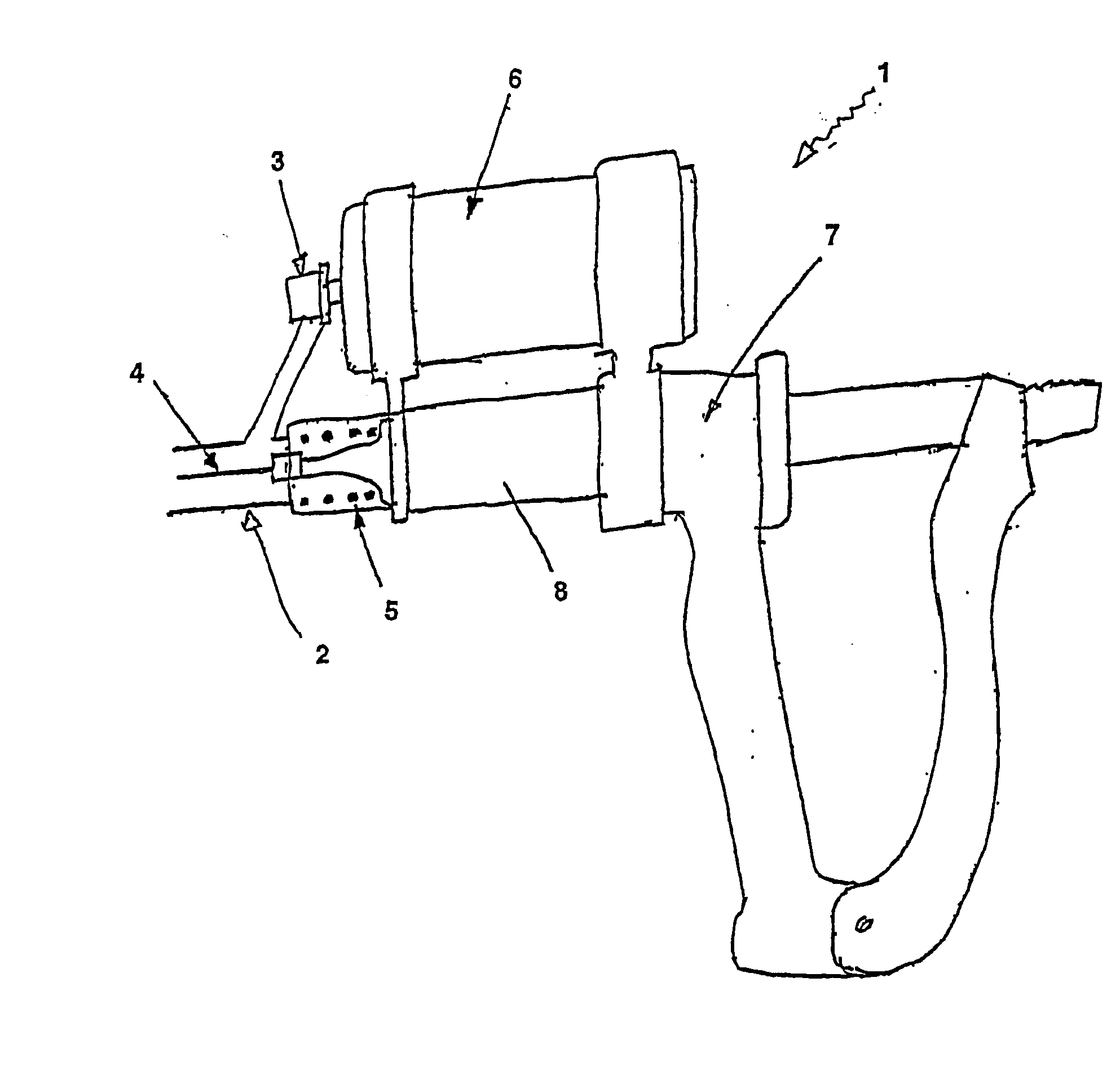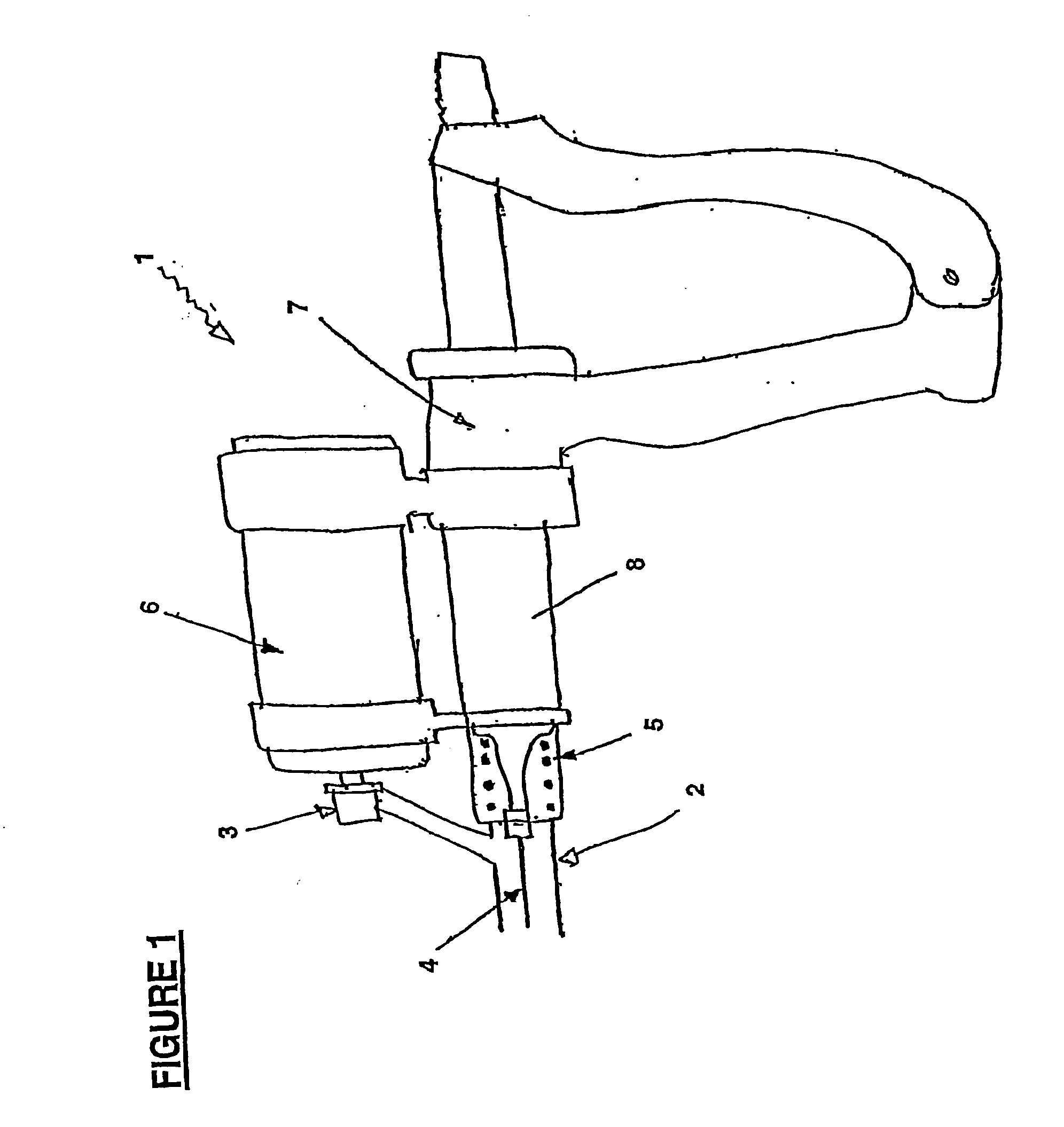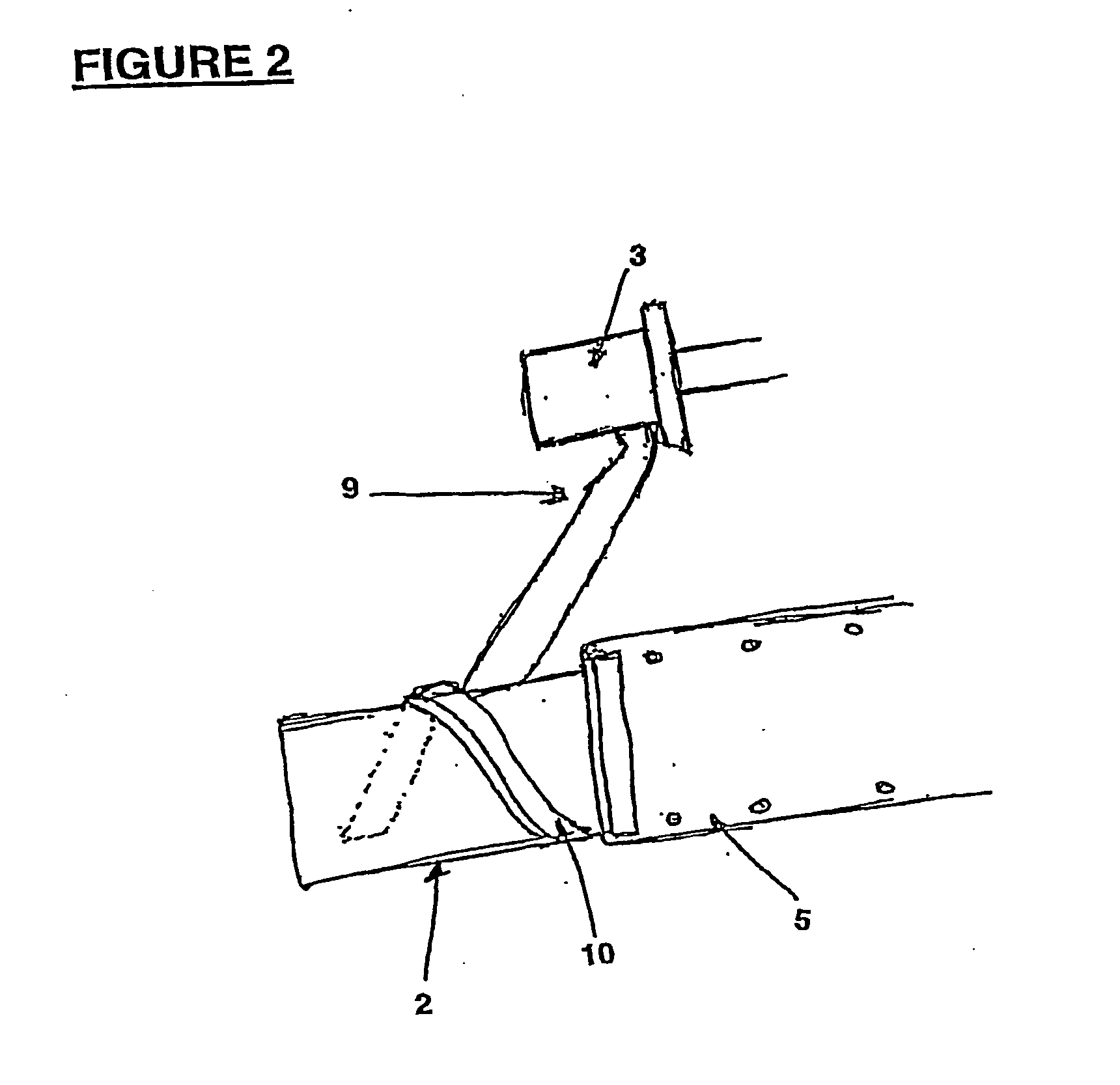Animal treatment and marking system
a marking system and animal technology, applied in the field of animal treatment and marking system, can solve the problems of difficult control of animals, frequent replacement of caps, confusion as to which animals have been treated, etc., and achieve the effect of reducing the chance of cross-infection and rapid preparation of animals
- Summary
- Abstract
- Description
- Claims
- Application Information
AI Technical Summary
Benefits of technology
Problems solved by technology
Method used
Image
Examples
Embodiment Construction
[0108] With respect to the drawings, there is provided a marking system for use in animal treatment as indicated by arrow 1.
[0109] The marking device (1) can be separately attached to an existing vaccinator (7).
[0110] The marking system (1) incorporates a needle shroud (2), which protrudes beyond the tip of the needle (4). The shroud (2) moves longitudinally with respect to the needle (4).
[0111] This allows the needle shroud (2) to retract as the needle (4) is inserted into the animal. As the shroud (2) retracts it actuates the secondary treatment applicator (6) by movement of the nozzle attachment (3).
[0112] The marking device (1) has an aerosol spray canister (6) containing the secondary treatment. It is preferably attached to the top of the vaccinator barrel (8).
[0113] The shroud (2) is connected to an end cap device (5), which screws onto the end of the barrel (8) of the vaccinator (7).
[0114] The end cap device (5) also contains a spring (11) which forces the shroud (2) back ove...
PUM
 Login to View More
Login to View More Abstract
Description
Claims
Application Information
 Login to View More
Login to View More - R&D
- Intellectual Property
- Life Sciences
- Materials
- Tech Scout
- Unparalleled Data Quality
- Higher Quality Content
- 60% Fewer Hallucinations
Browse by: Latest US Patents, China's latest patents, Technical Efficacy Thesaurus, Application Domain, Technology Topic, Popular Technical Reports.
© 2025 PatSnap. All rights reserved.Legal|Privacy policy|Modern Slavery Act Transparency Statement|Sitemap|About US| Contact US: help@patsnap.com



